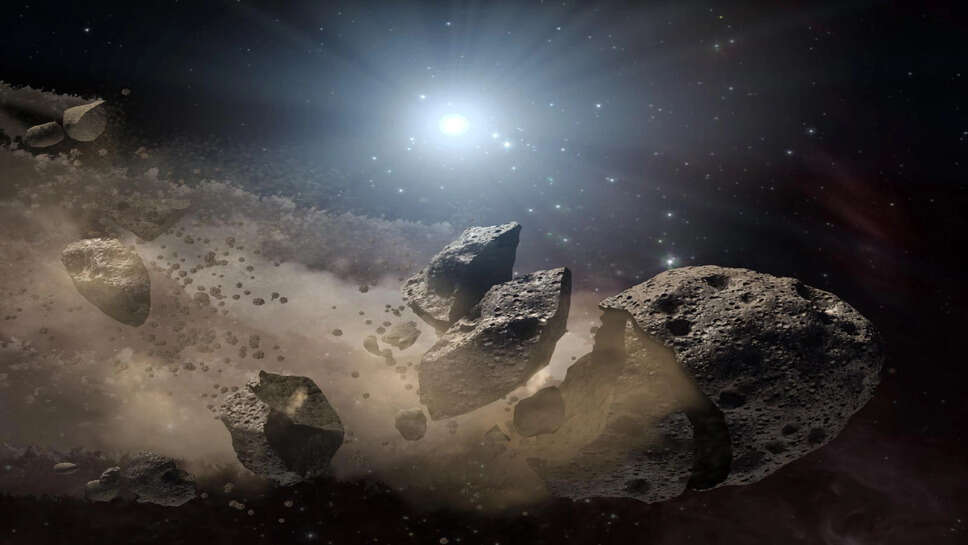Watching the Heavens: Why Humanity Monitors Dangerous Space Rocks

For most of us, the night sky is a place of wonder, a blanket of stars that evokes awe. But hidden among that splendor are potential threats—asteroids—hurtling through space at thousands of kilometers per hour. Most of them pass us by with harmless indifference. But what happens when they don’t?
The possibility of a catastrophic asteroid strike is not just a sci-fi trope—it’s a scientific reality. Throughout Earth’s history, massive impacts have reshaped the planet’s environment, wiped out species (including the dinosaurs), and left behind giant craters as silent reminders. Today, with advanced technology, we’ve begun to watch the skies with new urgency—trying to find, track, and potentially deflect asteroids that could one day head our way.
Why We Track Asteroids: A Brief History of Cosmic Wake-Up Calls
Earth has always been vulnerable to cosmic impacts. Around 66 million years ago, a roughly 10-kilometer-wide asteroid struck what is now the Yucatán Peninsula in Mexico, triggering the mass extinction of the dinosaurs. That single impact changed the course of evolution and planetary climate.
Fast-forward to more recent times, and we’ve had closer calls:
-
1908: Tunguska Event – A small asteroid or comet exploded over Siberia, flattening over 2,000 square kilometers of forest.
-
2013: Chelyabinsk Meteor – A 20-meter object entered Earth's atmosphere and exploded over Russia, injuring over 1,000 people from flying glass and debris.
These incidents serve as stark reminders that space rocks—some large enough to cause regional or even global devastation—are still out there, and we are not immune.
The Threat Landscape: What Counts as “Dangerous”?
Not every asteroid is a threat. Scientists categorize them based on size, orbit, and proximity to Earth.
-
Near-Earth Objects (NEOs) are asteroids or comets that come within 1.3 astronomical units (AU) of the Sun.
-
Potentially Hazardous Asteroids (PHAs) are those that come within 0.05 AU of Earth and are larger than 140 meters in diameter. These are the ones that can cause significant regional or even global destruction if they hit.
To date, thousands of NEOs have been identified, and a few hundred of them are labeled potentially hazardous. But it’s estimated that we’ve only found a fraction of the total.
How We Track Them: Eyes on the Sky
Modern asteroid tracking is a complex, coordinated effort involving space agencies, observatories, and specialized telescopes around the world. Some key components include:
1. Surveillance Networks
Telescopes in Hawaii, Chile, Arizona, and other locations scan the night skies continuously. Projects like NASA’s Near-Earth Object Observations Program, ESA’s Space Situational Awareness Programme, and others work to find and track NEOs.
2. Orbit Determination
Once detected, astronomers calculate the object's orbit using gravitational models, taking into account its current path, speed, and interactions with other celestial bodies. This helps predict whether it might hit Earth.
3. Impact Probability Calculations
Programs like NASA’s Sentry system calculate impact probabilities. If a new asteroid shows a small chance of impact in the future, it is closely monitored and catalogued.
4. Cataloging & Public Databases
Databases like JPL’s Small-Body Database or ESA’s Risk List keep updated records of all known NEOs, listing their size, orbit, and any potential threats.
What Happens If One’s Headed Our Way?
If astronomers detect an asteroid on a collision course with Earth, several measures can be taken—depending on the size of the object and how much warning time we have.
✅ Early Detection Is Key
With years or decades of advance notice, even modest changes to an asteroid’s orbit—nudging it a few centimeters per second—can make it miss Earth by a wide margin over time.
🛰 Planetary Defense Tactics
Some proposed or tested methods to deflect asteroids include:
-
Kinetic Impactors: Slamming a spacecraft into the asteroid to change its trajectory (e.g., NASA’s DART mission, which successfully changed the orbit of asteroid Dimorphos in 2022).
-
Gravity Tractors: Using a spacecraft’s gravitational pull to slowly alter the asteroid’s path over time.
-
Nuclear Explosions: Considered a last resort, nuclear devices could be detonated near the asteroid to either deflect or fragment it (though fragmentation risks creating multiple smaller impactors).
-
Laser Ablation: A high-powered laser could heat the asteroid surface and cause it to release gas, providing gentle propulsion away from Earth.
Who’s In Charge?
There is no single global authority on asteroid defense, but various organizations collaborate internationally. These include:
-
NASA’s Planetary Defense Coordination Office (PDCO)
-
European Space Agency (ESA)
-
United Nations Office for Outer Space Affairs (UNOOSA)
-
International Asteroid Warning Network (IAWN)
Together, they work to share data, coordinate tracking efforts, and create emergency response protocols.
Preparing for Impact: Emergency Planning
Even with short notice, local and national governments can implement emergency response strategies for smaller impactors:
-
Evacuation plans for predicted impact zones
-
Civil defense drills and public awareness campaigns
-
Damage modeling and impact prediction to assess fallout zones
Simulation exercises are held periodically—like NASA’s hypothetical asteroid scenarios during planetary defense conferences—to test our readiness.
The Future of Asteroid Tracking
Several advancements are in the pipeline to improve our planetary defense capabilities:
-
NEO Surveyor Mission: A space-based infrared telescope expected to launch in the coming years that will significantly improve our ability to find dark or small NEOs.
-
More Global Collaboration: Countries like India, China, and Japan are investing in their own NEO programs, adding diversity to the watch network.
-
Artificial Intelligence & Automation: AI is helping sift through vast telescope data to detect movement patterns indicating undiscovered asteroids.
-
Citizen Science: Amateur astronomers also contribute by tracking objects and validating observations.
Final Thoughts: A Cosmic Responsibility
While the risk of a major asteroid impact in our lifetimes is low, it’s not zero. That small risk carries large consequences, which is why the effort to track and defend against asteroids is not just scientific curiosity—it’s global insurance.
As humanity looks to explore and colonize other planets, protecting the one we’re already on must remain a top priority. Watching the skies isn’t just about wonder—it’s also about survival.
In a universe full of unpredictable threats, foresight and technology are our best shields. And so, every night, the silent watchers—astronomers, satellites, scientists—keep looking up, scanning the heavens for the next celestial visitor, and ensuring that if the sky falls again, we’ll be ready.
